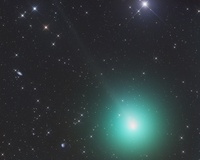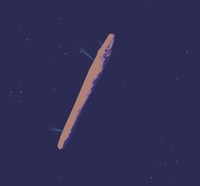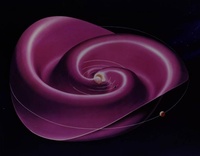COBS News archive
New Comet C/2019 J1 (Lemmon)
May 15, 2019

CBET 4625 & MPEC 2019-J122, issued on 2019, May 12, announce the discovery of a comet (magnitude ~17.5) in the course of the "Mt. Lemmon Survey" (G96), in images taken on 2019, May 04 with a 1.5-m reflector + 10K CCD. This object was reported as a comet by R. A. Kowalski and D. Rankin (G96, May 4). The new comet has been designated C/2019 J1 (Lemmon).
Comet cat
April 23, 2019

Tiny fragment of a comet found inside a meteorite
April 16, 2019
Comets & Asteroids - Summary for Jan & Feb 2019
April 02, 2019

Hubble watches spun-up asteroid coming apart
March 29, 2019

COBS Maintenance: Switch to hosted services
January 15, 2019
MU69 appears as a bi-lobed baby comet in latest New Horizons images
January 03, 2019

The tiny world 2014 MU69 is far behind New Horizons now and no longer visible to its cameras. Now, New Horizons’ task is to return its precious data to Earth. The process will take 20 months, but the best images should all arrive between now and the end of February. Some early ones have come down from the spacecraft in the hours since the flyby. These are not the best we will get, but they already show us much about MU69: this is probably what comets look like, before they become comets.
New Comet C/2018 Y1 (Iwamoto)
December 21, 2018

Hubble Takes a Close Look at the Brightest Comet of the Year
December 21, 2018

Rosetta witnesses birth of baby bow shock around Comet
December 21, 2018

December Comet brings back Rosetta memories
December 15, 2018

See a Passing Comet This Sunday
December 15, 2018

A hyperactive comet is approaching Earth
November 29, 2018

Small but hyperactive Comet 46P/Wirtanen is approaching Earth and could soon become visible to the naked eye. On Dec. 16th, the kilometer-wide ball of dirty ice will be less than 11.5 million km away--making it one of the 10 closest-approaching comets of the Space Age. It already looks magnificent through amateur telescopes.
NASA learns more about interstellar visitor 'Oumuamua
November 16, 2018

The first known interstellar object to visit our solar system -- named 'Oumuamua -- was detected in October 2017 by Hawaii's Pan-STARRS 1 telescope. But it was too faint for NASA's Spitzer Space Telescope to detect when it looked more than two months after the object's closest approach to Earth in early September. That 'non-detection' puts a new limit on how large the strange object can be, astronomers now report.
New Comet C/2018 V1 (Machholz-Fujikawa-Iwamoto)
November 12, 2018

Comet tails blowing in the solar wind
November 04, 2018

Secret shared by comets and sand crabs
October 26, 2018

Comet landscape
October 03, 2018

Gaia finds candidates for interstellar ‘Oumuamua’s home
September 26, 2018

Observation Alert: Extremely bright mag 12.2 outburst of Comet 29P
September 24, 2018
